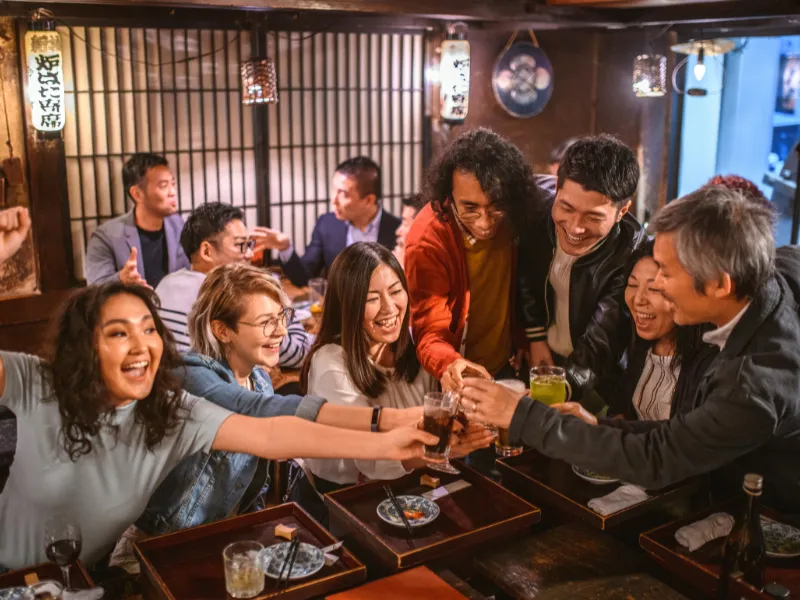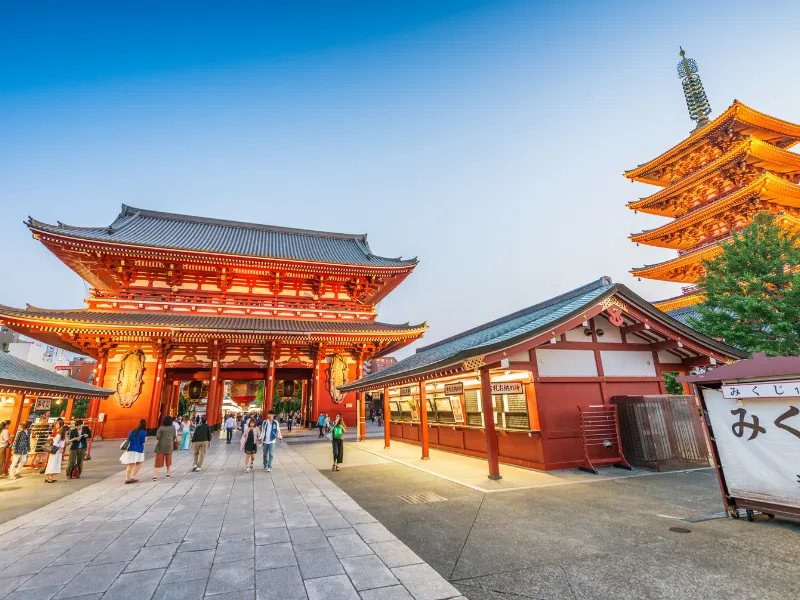Japanese Izakaya Guide – How to Enjoy

An Izakaya offers a unique Japanese nightlife experience combining food, drinks, and social warmth.
For international visitors, a clear guide to izakaya culture, ordering, and etiquette can make this local tradition truly unforgettable.
Understanding What an Izakaya Is
Izakayas are casual Japanese pubs, similar to tapas bars, where friends, colleagues, or families gather for drinks and shared small plates.
This section introduces the essence of izakaya culture, including typical seating, menu style, and dining flow.
Style and Atmosphere
Izakayas range from cozy, dimly lit local joints to lively modern establishments. Seating may include bar stools, tables, tatami-style mats, or even standing-only spaces.
Menu Format and Shared Plates
Expect a variety of sakana (small salty snacks paired with alcohol) and other dishes like yakitori, edamame, sashimi, and more. Food is meant to be shared, much like Spanish tapas.
Izakaya etiquette for tourists

Understanding izakaya etiquette is key to enjoying this uniquely Japanese dining experience. From seating customs to drink manners, knowing the basics helps you blend in and avoid awkward situations.
This guide covers essential izakaya etiquette for tourists so you can eat and drink with confidence.
Otōshi (Table Charge) and Ordering
Upon seating, many izakayas serve a small appetizer called otōshi (in Tokyo) or tsukidashi (in Kansai). This is a mandatory cover‑charge dish, not optional, so don’t be surprised when it appears on your bill.
Drinking Manners and Toasting
In Japanese izakayas, drinking is more than just enjoying alcohol. It’s a social ritual.
It’s polite to wait until everyone has their drink before raising your glass and saying “Kanpai” together. Also, it’s customary to pour drinks for others rather than pouring your own.
Chopsticks and Table Behavior
Avoid pointing chopsticks at people or hovering them over dishes.
Don’t rub wooden chopsticks together that implies cheap utensils. Also, never pass food directly from your chopsticks to someone else’s (a funeral-associated taboo).
Typical Experience and Tips about izakaya
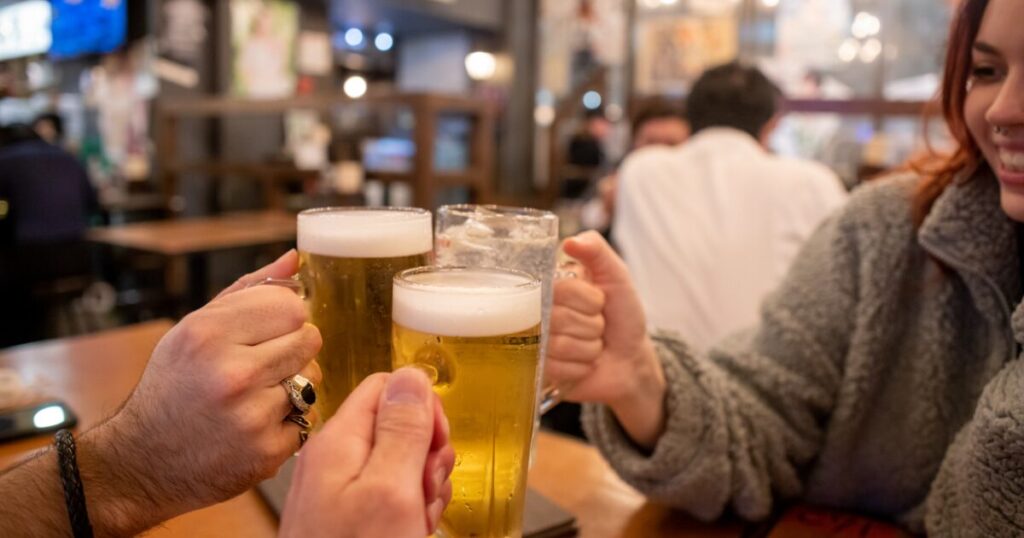
Visiting an izakaya is more than just having dinner. It’s a full cultural experience. From the moment you walk in to the way you pay the bill, there are a few things that might surprise first-time visitors.
Here are some helpful tips to guide you through a typical night at a Japanese izakaya.
Seating and Time Limits
During busy times, izakayas may enforce a ~2-hour seating limit. If you choose all‑you‑can‑drink courses (nomihōdai), ordering pace and timing are key to avoid overspending.
Atmosphere and Ordering Style
Expect lively chatter, occasional singing or celebrations if groups are celebrating birthdays, and an informal, festive vibe even strangers may get involved in toasts or fun moments.
Paying and Tipping Norms
Tipping is not customary and often confusion over leaving money on the table is common—servers may chase you to return it. Many establishments use a small tray to receive payment rather than handing cash directly.
Japanese izakaya guide – Safety Tips and Warning Points

Although izakayas are generally safe and relaxed, a few cautionary notes help ensure a smooth experience.
Beware of Otōshi and Hidden Charges
Some izakayas tack on otōshi, a seating charge, per person. Also, if you choose “nomihōdai” (all-you-can-drink), be cautious: you may feel pressure to drink quickly to “get your money’s worth” and may overspend.
Food Quality and Hygiene
While most izakayas maintain high hygiene standards, smaller local spots may differ. If raw meat or undercooked dishes like chicken skewers are ordered (e.g. pink chicken), ensure you trust the establishment or opt for grilled seafood options to minimize risk.
Smoking Allowed
Although indoor smoking laws took effect in 2020, many izakayas still permit smoking. If sensitive to smoke, ask before entering or choose a non‑smoking alternative.
What to order at an izakaya in Japan
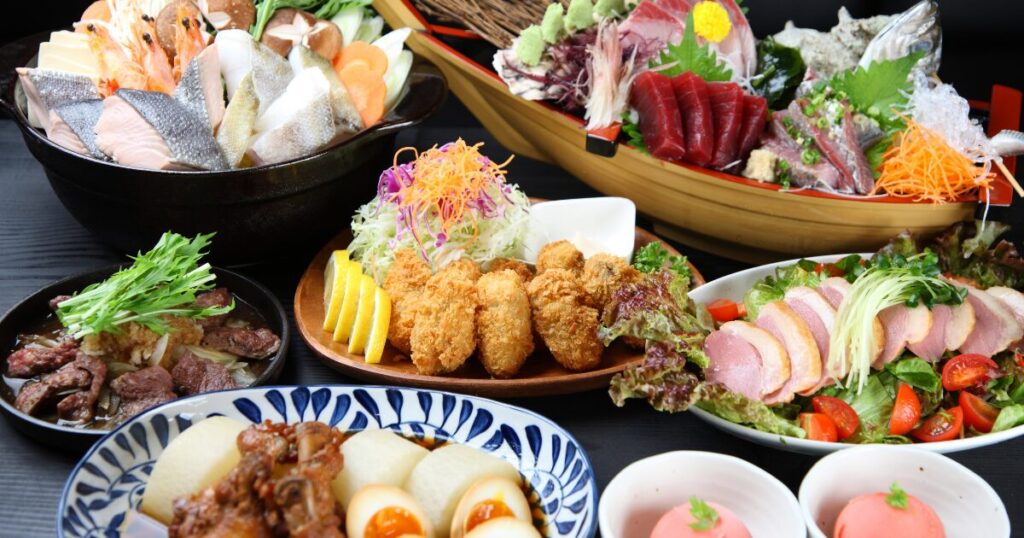
Ordering at an izakaya can feel overwhelming with so many tempting options on the menu. From grilled skewers to sashimi and fried bites, dishes are designed to be shared and enjoyed with drinks.
This guide introduces popular items to try so you can order with confidence.
| Category | Menu Examples |
|---|---|
| Snacks & Starters | Edamame, cabbage salad, pickles (sakana/otōshi) |
| Grilled Skewers | Yakitori (chicken), pork skewers, grilled vegetables |
| Fried | Karaage chicken, korokke (croquette), takoyaki |
| Sashimi | Salmon, tuna sashimi, or local fish slices |
| Rice & Noodles | Yaki onigiri (grilled rice balls), noodles toward end |
| Drinks | Beer, sake, shōchū, highballs, cocktails |
Begin with a light beer or sake, order a few small plates to share, and gradually pace out larger dishes as conversation flows.
End with a rice or noodle dish if you’re still hungry.
FAQ About Japanese Izakaya
- Are izakayas vegetarian-friendly?
-
Most izakayas are not specifically vegetarian or vegan, as many dishes use meat, fish, or fish-based broth (dashi). Still, you can often find edamame, pickled vegetables, tofu dishes, or grilled mushrooms.
- Can Muslim or halal travelers eat at izakayas?
-
Halal-certified izakayas are rare, and pork or alcohol-based sauces are common. However, some seafood or vegetable dishes may be acceptable if prepared without alcohol.
- Do izakayas have English menus or English-speaking staff?
-
In tourist areas like Shinjuku, Shibuya, or Kyoto, many izakayas offer English menus or picture menus. Staff may speak basic English, but it’s best to use a translation app for more complex requests.
- How can I avoid overcharging or tourist traps?
-
Most izakayas are fair, but avoid places without clear menus or prices, especially in nightlife districts like Kabukicho or Roppongi.
- Can I visit an izakaya alone?
-
Yes! Many izakayas have counter seating, making them ideal for solo travelers. Just say, Hitori desu (“Just one person”) when you arrive.
- Are children allowed at izakayas?
-
Family-friendly chain izakayas usually allow children, but smoking or noisy spots may not be ideal. Visiting early in the evening is recommended for families.
- Is tipping expected at izakayas?
-
No. Tipping is not part of Japanese dining culture, and service charges are included in your bill.
- What if I can’t use chopsticks?
-
Many izakayas can provide forks or spoons if you ask. Say, Fōku arimasu ka? (“Do you have a fork?”).
- Can I pay with credit cards or IC cards like Suica?
-
Large chain izakayas often accept credit cards, IC cards, and even QR payments, but smaller local spots may be cash-only.
- Are there non-smoking izakayas?
-
Since 2020, many izakayas have smoking restrictions, but some still allow it. Ask, Kinen seki arimasu ka? (“Do you have non-smoking seats?”) before sitting down.
Final Thoughts on izakaya
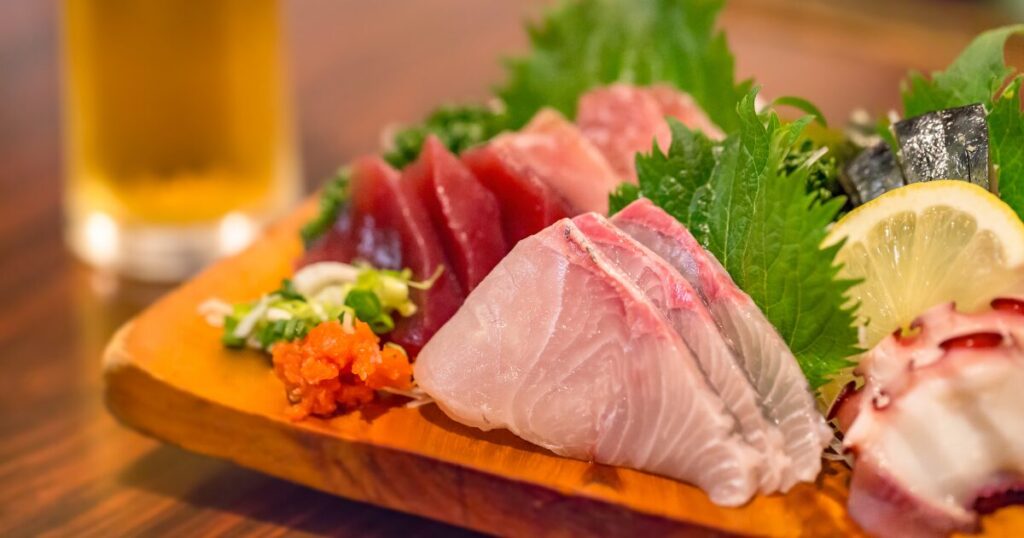
Izakayas are a cornerstone of modern Japanese social dining, friendly, flexible, and rich in flavor. This guide aims to demystify the experience for foreign visitors by covering key phrases, etiquette, and what to expect.
With a little knowledge about otōshi, customs like pouring drinks, ordering wisely, and watching for extra charges, tourists can fully savor this vibrant slice of Japanese culture.
Enjoy your izakaya adventure.
Kanpai!

